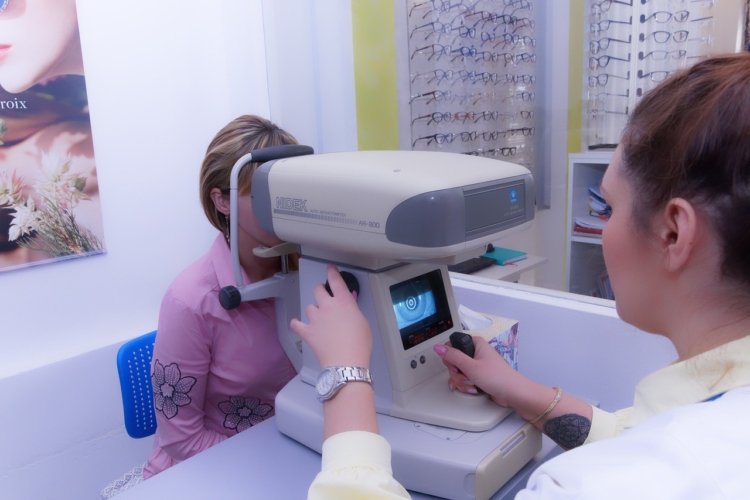Cataracts are an eye condition whereby the natural lens of the eye becomes cloudy. They are very common, affecting one in three of us, and there isn’t a single, specific cause that applies to everyone. Instead, they can develop due to a combination of factors, including age, genetics, and other health conditions. In this post, we’ll investigate what causes cataracts and how Optegra can help if you need cataract surgery.
At Optegra, we are true cataract surgery specialists with over 35,000 procedures performed a year. Patients can get a referral from the NHS for standard treatment, and we also provide a more bespoke service to help patients undergoing cataract surgery achieve spectacle independence. This “cataract refractive surgery” utilises a whole raft of technologies and principles, including advanced-technology lens implants.
Our access to the full range of technologies, combined with our leading-edge vision correction philosophy, means our cataract patients can be sure of an excellent result that meets the goals that they set in conjunction with their consultant.
‘Why me?’ … ‘Why Have I Developed a Cataract?’
Several etiological factors, including age, genetics, and certain health conditions or lifestyle choices, can collectively increase the chances of developing cataracts.
Mainly, cataracts occur as part of the natural eye ageing process; however, they can occur secondary to other medical conditions such as diabetes or medications such as steroids. People can also be born with cataracts or develop cataracts at a younger age due to genetic exposure to sunlight and diet, and sometimes the cause can be unknown.
What Causes Cataracts?
The following factors can all contribute to cataract formation:
Age: Cataracts are most commonly associated with aging. The ageing process naturally leads to changes in the eye’s lens, causing it to become less transparent and more prone to clouding. The longer a person lives, the greater the cumulative exposure of their eyes to various environmental factors, including UV radiation and oxidative stress, which can further contribute to cataract formation over time.
Genetics: Family history plays a role in cataract development. Genetic factors can influence the structural integrity of the lens and its susceptibility to cataract formation. If close relatives have had cataracts, an individual may inherit a genetic predisposition that increases their risk.
Existing Health Conditions: Several health conditions can increase the risk of cataracts. For example, diabetes can lead to the accumulation of excess sugar in the lens, causing it to swell and cloud. Similarly, high blood pressure can affect blood flow to the eye, potentially accelerating lens changes. Eye injuries or surgeries can disrupt the lens and increase the likelihood of cataract formation in the affected eye. Medications like corticosteroids, often used to manage certain health conditions, can also promote cataract development as a side effect.
Lifestyle Factors: Lifestyle choices can contribute to cataract development. Smoking, for instance, exposes the eyes to harmful chemicals that can accelerate the clouding of the lens. Prolonged exposure to UV radiation, especially without adequate eye protection, can lead to oxidative damage in the eye, which may increase the risk of cataracts. Diets lacking in antioxidants and essential vitamins and minerals may fail to protect the lens from oxidative stress.
It’s important to note that while these factors increase the risk of cataract development, not everyone with these risk factors will develop cataracts. Cataracts are a common age-related condition, and the cumulative effect of these factors can vary from person to person.
Download Information Pack
Learn more about how our latest vision correction techniques could improve your vision and change your life. Or Book Free Consultation.
Type 1 and 2 of Diabetes Mellitus
Diabetes mellitus can have a significant impact on the development of cataracts. Elevated blood sugar levels associated with diabetes can lead to changes in the lens of the eye, causing it to become cloudy and opaque. This clouding of the lens, known as diabetic cataracts, can impair vision and lead to cataract formation at an earlier age than in individuals without diabetes.
It is relatively common for patients with diabetes to develop cataracts. Diabetes is a well-established risk factor for cataracts, and individuals with uncontrolled or poorly managed diabetes are at a higher risk of developing cataracts than those without diabetes. Regular eye examinations and effective management of diabetes, including blood sugar control, are essential for reducing the risk and delaying the onset of diabetic cataracts. Early detection and timely treatment of cataracts in individuals with diabetes can help preserve vision and improve overall eye health.
Skin Conditions Can Increase the Chances of Cataracts
People with some skin conditions, such as eczema, especially if severe and even more so if located around the face and eyelids, can increase their chances of developing cataracts at a younger age than would otherwise be the case. It is possible that some of this risk increase may be linked to the use of steroid skin creams such as Hydrocortisone as well as the underlying condition itself.
Cataracts are more commonly associated with factors such as ageing, genetics, diabetes, high blood pressure, smoking, and certain medications, as previously discussed. While eczema does not directly contribute to cataract formation, individuals with eczema should maintain overall health and seek regular eye check-ups, especially if they have other risk factors for cataracts or if they notice changes in their vision.
Mild Eye Injuries
Mild eye injuries can potentially lead to a higher chance of developing cataracts, but this risk is influenced by several factors, including the nature of the injury, the individual’s age, and their overall eye health. Here’s how mild eye injuries can contribute to cataract development and how age may play a role:
Damage to the Lens: When an eye injury occurs, it can damage the eye’s structures, including the lens. Even mild injuries can disrupt the lens’s clarity and integrity. Trauma to the lens may initiate changes that, over time, can contribute to the development of cataracts.
Cumulative Effect: The risk of cataract development from an eye injury may increase with age due to the cumulative effect of environmental factors and oxidative stress on the eye. As individuals get older, their eyes may have been exposed to various factors such as UV radiation, toxins, and metabolic changes, all of which can further contribute to lens damage and cataract formation.
Delayed Onset: It’s important to note that cataracts resulting from mild eye injuries may not develop immediately after the injury. In many cases, there can be a significant delay between the injury and the onset of cataract symptoms. This is because the eye’s natural repair mechanisms may initially mask the damage, and cataract changes may become more noticeable over time.
Other Factors: Age-related cataracts are the most common, and mild eye injuries may be just one of several factors contributing to cataract formation in older individuals. Other risk factors, such as genetics, diabetes, and smoking, can also play a significant role.
Regular Eye Examinations: Regardless of age, individuals who have experienced even mild eye injuries should have regular eye examinations. An eye care professional can monitor the health of the eyes and detect early signs of cataracts or other eye conditions. Prompt diagnosis and appropriate treatment, such as cataract surgery, can help manage cataracts and preserve vision.

What Causes Cataracts at An Early Age?
Cataracts at an early age, particularly in patients under the age of 40, can be caused by a combination of factors, and it’s important to note that this is relatively rare compared to age-related cataracts. Here are some potential reasons for the early onset of cataracts:
Congenital Cataracts: Some individuals are born with cataracts, known as congenital cataracts. These may develop during foetal development or shortly after birth due to genetic factors or maternal infections during pregnancy.
Trauma: Eye injuries or trauma can lead to the development of cataracts at any age, including in younger individuals. Even mild to moderate injuries can damage the eye’s structures, including the lens, potentially leading to cataract formation over time.
Genetics: Inherited genetic mutations can make some individuals more prone to developing cataracts at a younger age. These genetic factors can affect the structure and function of the eye’s lens.
Medical Conditions: Certain medical conditions, such as diabetes or metabolic disorders, can increase the risk of cataracts in individuals under 40 if they are not well managed.
Medications: Long-term use of certain medications, particularly corticosteroids, can increase the risk of cataracts in individuals of all ages, including younger adults.
Smoking and Environmental Factors: Exposure to environmental factors, such as smoking or prolonged exposure to UV radiation without proper eye protection, can accelerate cataract development in younger individuals.
Secondary Conditions: Cataracts can also develop as secondary conditions resulting from other eye problems or diseases, such as uveitis or retinitis pigmentosa, which may occur in younger individuals.
Congenital Cataract Causes
Congenital cataracts are present at birth or develop during a baby’s first year of life. They can have various causes, and they may be detected at different stages of infancy.
Causes of Congenital Cataracts
Genetics: Congenital cataracts can be caused by genetic factors. They may be inherited from one or both parents who carry a specific gene mutation associated with cataract development.
Infections During Pregnancy: Certain infections that a mother contracts during pregnancy, such as rubella (German measles) or toxoplasmosis, can increase the risk of congenital cataracts in the baby.
Metabolic Disorders: Some metabolic disorders, like galactosemia, can lead to the development of congenital cataracts in infants.
Injury or Trauma During Birth: Physical injury or trauma during the birthing process can cause cataracts in newborns.
Medical Conditions: Congenital cataracts can also be associated with other medical conditions or syndromes, such as Down syndrome or Lowe syndrome.
You’re in Safe Hands with Our Cataract Surgeons
There’s no better place for treatment than Optegra. We offer dedicated eye hospitals and clinics available nationwide, and our consultants are true experts in the field of cataract surgery. To learn more about how we can help, please contact us for a free and no-obligation consultation.

By Author: Amir Hamid
Mr. Amir Hamid is Chief Medical Officer at Optegra and an expert refractive surgeon, based in London.
Medically Reviewed Date: 11th October 2023
